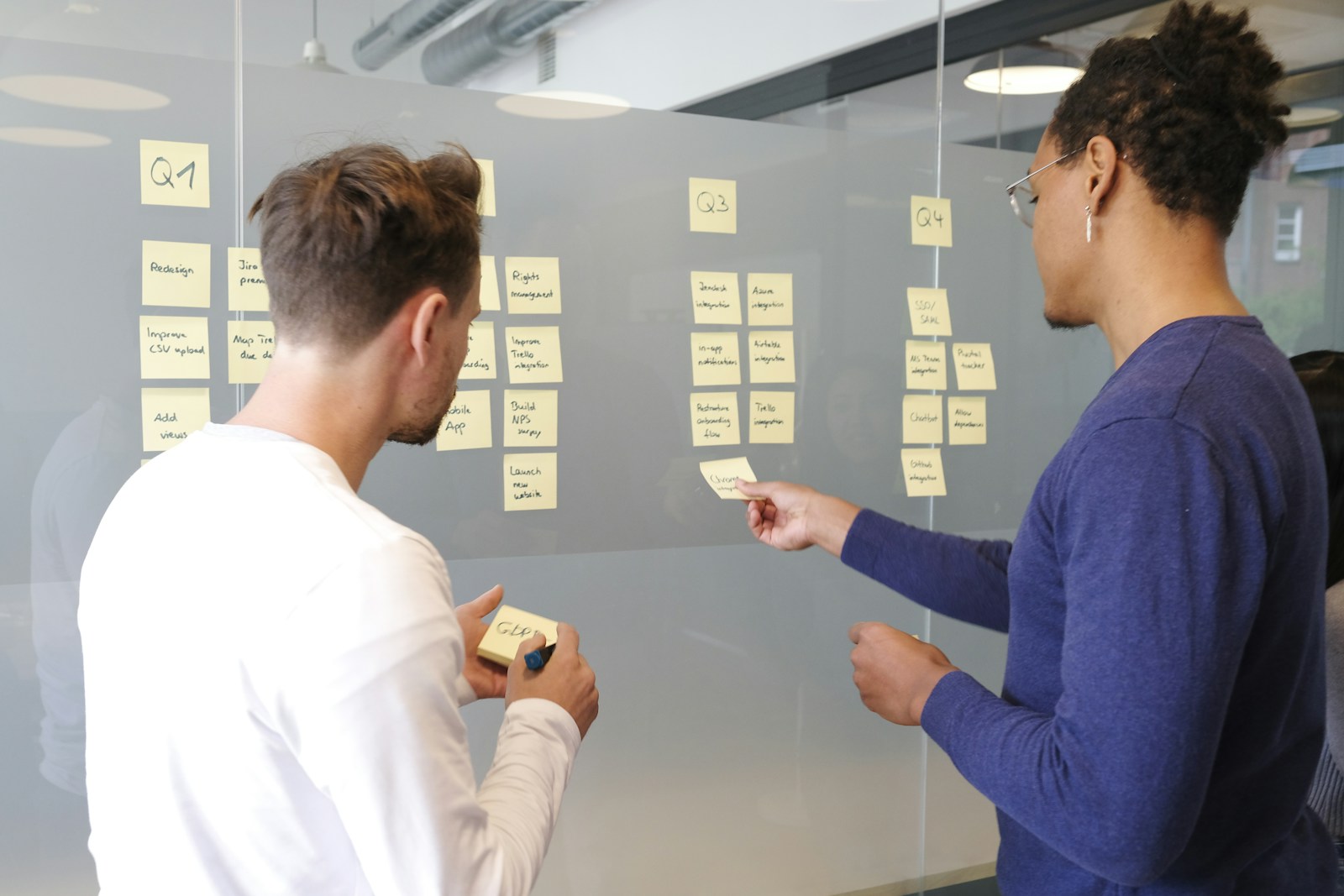Navigating the Workforce Jungle: Practical Wisdom and Fresh Perspectives from the HR Frontlines
Unlock the Secrets to Thriving in Today’s Complex Workplace Landscape

Welcome to the HR jungle! I’m Tom, your seasoned guide with 50 years in the trenches. From high-stakes negotiations to the delicate dance of compensation, I’ve seen it all – and I’m here to help you navigate the wild, wonderful world of workforce management.
Each week, I’ll share stories and strategies from the frontlines, exploring big issues like industrial relations and employee engagement. But don’t worry, it won’t be a stuffy lecture. We’re all in this together, so think of this blog as your virtual watercooler – a place to swap ideas, share laughs, and learn from each other’s experiences.
Ready to dive in? Check out our popular posts below or search for insights on your biggest challenges. And don’t be shy – the comments are always open!
Thanks for joining me on this adventure. Let’s navigate the HR jungle together and come out wiser, more appreciative, and ready to thrive.
Explore Topics That Matter
Industrial Relations
Navigating the complex dance of industrial relations? We’ve got stories and strategies to turn tension into partnership.
Employee Relations
Want to build a workplace where everyone feels heard and valued? Discover the secret sauce of employee relations.
Remuneration Strategies
Curious about the art and science of crafting irresistible compensation packages? We’ll spill the beans on remuneration.
Workplace Transformation
Ready to lead your team through the wild ride of change? Buckle up for insights on navigating transformation.
Leadership
What does it take to be a leader who inspires greatness? We’ll share tales from the leadership trenches.
Staffing
Dreaming of assembling an all-star cast for your organisation? Uncover the mysteries of staffing success.
Tom’s Top Picks
A Holiday Guide for Line Managers: Avoid the 3 Most Common Recruitment Mistakes
Recruitment mistakes can lead to costly hires. This holiday season, give yourself the gift of smarter hiring with the CFM model: Competence, Fit, and Motivation. Avoid the three common pitfalls—settling for sub-par candidates, failing to re-advertise, and mistaking competitors for ideal hires. Remember: hire for attitude, train for skills, and build better teams!
Reflections from an HR Veteran: My Journey Through Five Decades of Change
From a fresh graduate with a calculator in 1974 to mentoring tomorrow's leaders today - what a journey through HR's evolution! We've moved from shuffling papers to shaping futures, from typewriters to AI, from adversarial battles to collaborative partnerships. But one thing hasn't changed: at its heart, HR has always been about people and their potential.
Turning Crisis into Collaboration: A Coal Mine’s Transformation
Two phones sat on my desk - one for lawyers, one for building an employment centre. With coal prices halved overnight and 220 jobs at stake, I asked the unions, "Which call should I make?" While other mines faced 16-week strikes, we chose collaboration over confrontation. Sometimes your biggest crisis becomes your proudest achievement.
Workplace Know-How: Tips & Insights
Mastering Leadership: Surfacing Hidden Rules to Resolve Workplace Conflict
In workplaces, what appears as ‘miscommunication’ often arises from hidden rules—unspoken assumptions that shape interactions. By surfacing these deeper influences through patient inquiry and active listening, leaders transform conflict into productive dialogue. When …
A Holiday Guide for Line Managers: Avoid the 3 Most Common Recruitment Mistakes
Recruitment mistakes can lead to costly hires. This holiday season, give yourself the gift of smarter hiring with the CFM model: Competence, Fit, and Motivation. Avoid the three common pitfalls—settling for sub-par candidates, failing to re-advertise, and mistaking co…
Shaping Modern Australian Workplaces: A Detailed Journey Through Industrial Relations (1974-2024) Part 2
Industrial relations isn’t just about legislation—it’s about navigating human relationships through change. From managing Drayton’s 1997 restructure to building Yancoal’s workforce and creating CleanCo’s unified culture, the key has been balancing technical excellence…
The Great Shift: 50 Years of Australian Industrial Relations (1974-2024) Part 1
From filing cabinets and typewriters in 1974 to today’s digital workplaces, Australian industrial relations has undergone a remarkable transformation. Through roles at Education Queensland, MIM Holdings, CIG Gases, and into the coal industry, I’ve witnessed the evolutio…
WorkChoices: The Law That Changed Australian Workplaces Forever
Picture Australia, 2005. John Howard’s government had just won control of both houses, and everything we knew about workplace relations was about to change. WorkChoices wasn’t just another law—it was a revolution that divided the nation. Some saw it as the dawn of wor…
The Future of HR: Where People Strategy Meets Digital Innovation
Remember when HR just meant paperwork and policies? Those days are gone. Today’s HR is where human potential meets digital innovation, where AI helps us predict workforce needs while emotional intelligence drives real connections. We’re not just managing people anymore�…
From Hard Line to Fair Go: Understanding Australia’s Fair Work Act 2009
Remember 2009? As Australia shook off the GFC, something revolutionary happened in our workplaces. The Fair Work Act arrived, bringing a fresh approach to workplace relations. Gone were the complex rules of old, replaced by clear standards everyone could understand. It …
The Workplace Relations Act 1996: How One Law Reshaped Australian Working Life
The Workplace Relations Act 1996 wasn’t just another law—it was the catalyst that transformed Australian workplaces forever. Gone were the days of phone book-sized awards and rigid rules about tea breaks. Instead, we entered an era where employers and employees could …
The Great Shift: How Australia Moved from Centralised Wage Fixing to Enterprise Bargaining
Imagine Australian workplaces where your pay was set by a distant tribunal, down to the last detail—even what you’d earn for working in the rain. Then came the 1990s revolution: enterprise bargaining. Suddenly, workplaces could negotiate their own deals, marking a pro…
The Sex Discrimination Act 1984: A Revolution That Transformed Australian Workplaces
Before the Sex Discrimination Act 1984, Australian workplaces were a different world. Women could be legally paid less than men, job ads boldly stated “males only,” and pregnancy meant possible dismissal. Then, with one pioneering piece of legislation, everything change…
Managing Complex Employee Relations Issues: A Strategic Approach
Managing complex employee relations issues demands a strategic approach combining clear processes, fair implementation, and thorough documentation. In today’s evolving workplace, organisations must navigate challenges ranging from performance management to mental health…
The Role of Remuneration in Employee Retention: Beyond the Pay Cheque
In today’s tight labour market, effective retention strategies require a sophisticated approach to total rewards that goes well beyond base salary. While competitive pay remains crucial, successful organisations recognise that modern retention demands a holistic approac…
Leading Organisational Change in a Unionised Workforce: A Strategic Approach
Managing organisational change in unionised environments demands more than standard change management approaches—it requires deep understanding of industrial relations and stakeholder dynamics. Through strategic planning, early union engagement, and transparent commun…
Developing a Competitive Executive Remuneration Strategy: A Modern Approach
In today’s dynamic business environment, executive compensation isn’t just about competitive salaries—it’s about creating a comprehensive package that drives performance, ensures retention, and aligns with organisational goals. Modern remuneration strategies must bala…
How to Navigate Complex Union Negotiations in High-Risk Industries
In high-risk industries, union negotiations demand more than just bargaining skills—they require a deep understanding of safety protocols, regulatory compliance, and operational continuity. When a mining company faces negotiations during a safety overhaul, or an oil r…
LEAP into Ikigai: Crafting a Life of Purpose and Fulfilment
LEAP into Ikigai: Crafting a Life of Purpose and Fulfilment
Explore how the LEAP model—Location, Environment, Aspirations, and Position—integrates with the Japanese concept of Ikigai. This comprehensive guide highlights their similarities and differences, offering p…
LEAP and the Net Will Appear: A Comprehensive Guide to Career and Life Planning
Taking a leap into the unknown can be daunting, but the LEAP model—Location, Environment, Aspirations, Position—offers a structured yet flexible approach to navigating career and life decisions. This guide explores how to align your choices with your values and aspi…
Discovering Ikigai: The Japanese Concept of a Fulfilling Life
Ikigai, a Japanese concept meaning “a reason for being,” offers a path to a fulfilling life by balancing what you love, what you’re good at, what the world needs, and what you can be paid for. This holistic approach can lead to deeper satisfaction and purpose, guiding…
Building a Culture of Accountability: 3 Key Strategies for Empowering Teams
Creating a culture of accountability is crucial for high-performing teams. It goes beyond setting expectations—it’s about empowering team members to take ownership of their roles. This article explores practical strategies, including clear goal setting, effective fe…
The Art of Adaptive Leadership: Navigating Change with Resilience
Adaptive leadership is essential in today’s dynamic business environment. This article explores key strategies: embracing uncertainty, engaging employees, and effective communication. Using the VUCA model, it outlines how leaders can foster resilience and navigate cha…
Subscribe for Expert Insights
Don’t miss our latest articles and updates. Subscribe to receive actionable advice and thought leadership directly to your inbox.
Let’s Tackle Your Workforce Challenges
Ready to take the next step? Explore our blog or contact us to learn how Peoplemix Consulting can provide solutions tailored to your business needs.





















